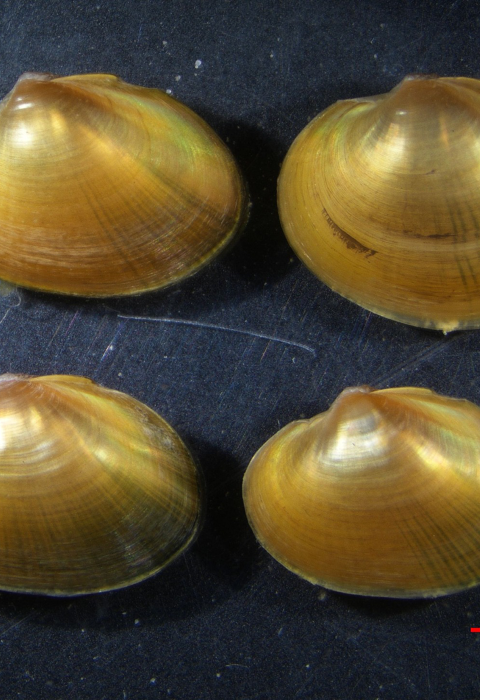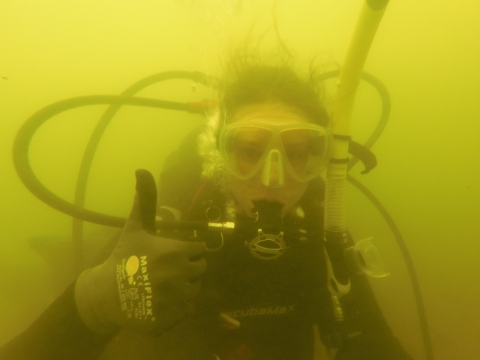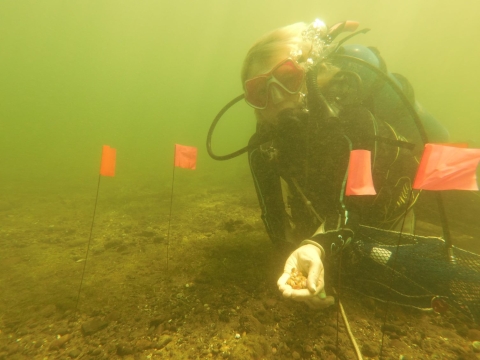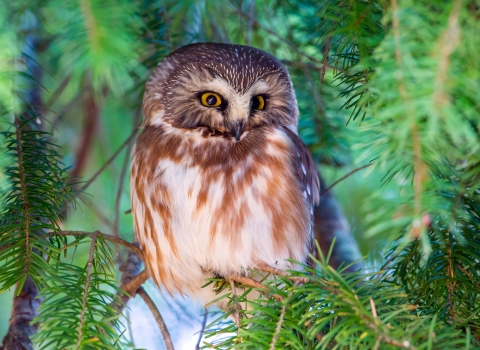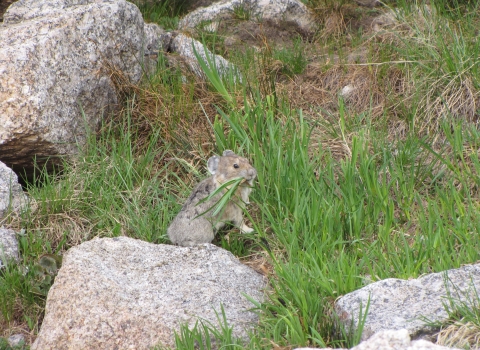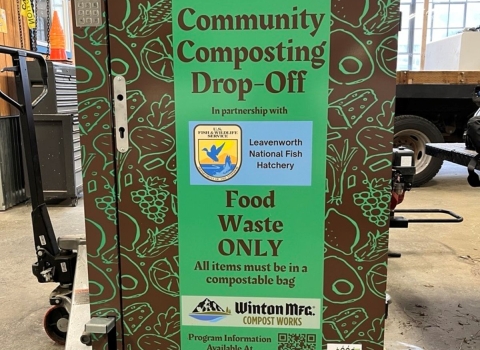Descending into murky waters and scouring a silty river bottom are all in a day’s work for the Ohio River Islands National Wildlife Refuge dive team. The group of staff, volunteers and dedicated partners delve into the depths of the river to monitor the ecosystem -- including 10 freshwater mussels protected by the Endangered Species Act.
The refuge protects 362 miles of the upper Ohio River, including 22 islands and four mainland units. Lock-and-dam systems divide the river into many pools, each with its own history and mussel species — like the fat pocketbook and pistolgrip, and federally listed round hickorynut. The refuge was established to conserve and enhance the quality of the Ohio River, its unique pools and diverse species.
Saving species
As the park ranger at the refuge, Michael Schramm regularly engages with visitors and online followers; he did not expect his duties to be conducted underwater.
“When you join the U.S. Fish and Wildlife Service, you get involved in hands-on conservation no matter what you do. There’s always an opportunity to save species,” he said.
More than 40 species of freshwater mussels can be found within the refuge, but the mussels here have experienced major challenges. Following a devastating chemical spill in 1999, then-refuge biologist, Patty Morrison, pioneered vital mussel conservation work to restore the estimated one million mussels lost to contamination, as well as boost other historical populations. Assessing the damage and designing restoration plans helped ensure species like the pink mucket, fanshell and sheepnose mussels would make a comeback in the iconic river.
Thought to be long-gone from the Ohio, endangered purple cat’s paw pearlymussels were also reintroduced to the back channel of the river in 2017, nearly 100 years after they were last documented there. More than 300 purple cat’s paws now thrive there, thanks to the refuge’s long-term mussel conservation.
Mussel conservation is always a group effort. The dive team is only able to continue their underwater work thanks to partners like White Sulphur Springs National Fish Hatchery and the West Virginia Department of Natural Resources (WVDNR).
For the endangered round hickorynut mussel, mature adults collected by the WVDNR were used at White Sulphur Springs National Fish Hatchery to propagate and raise juvenile round hickorynuts in a safe and controlled environment. In 2020, the team returned the breeding adult mussels to the Ohio River. Just two short years later, the team was ‘planting’ juvenile round hickorynuts into new mussel beds, where they will expand over time and establish a robust population.
Sweep. Look. Feel.
Annual surveys are another way the dive team conserves mussels. Learning about the ecology of the Ohio River this intimately is key for long-term monitoring and conservation of its wildlife. In the murky conditions, refuge biologist Elaine Barr repeatedly sweeps the river bottom, looking for the siphons of buried mussels, and feeling for smooth, familiar shapes.
“Working together on this yearly mussel mission makes this work extremely rewarding,” explains Barr. “There is so much joy in diving for mussels; it’s like looking for gold in a cryptic, underwater world.”
Following years of recorded data, GPS points and underwater landmarks (like an abandoned tire, for instance), the dive team can easily find previously discovered mussel beds, saving valuable time underwater and allowing the team to explore new areas.
Freshwater mussels play an important role in rivers and streams. One mussel can siphon up to 15 gallons of water a day, filtering out nutrients, as well as suspended pollutants, and preventing their spread downstream. Much like plants, mussels take root on river bottoms and help stabilize the sand and gravel, keeping river bottoms secure for aquatic insects, crayfish and macroinvertebrates.
Discovering which species of mussel are in the river's distinct pools gives biologists like Barr a better understanding of the overall mussel diversity. With each pool having a unique history and environmental impacts, long-term monitoring shows the team where mussels are improving or declining from year to year and how they can be protected.
Other duties as assigned
Species aren’t the only thing being saved, though. A long-standing dive team tradition involves saving sunken treasures found in the river, affectionately called “river booty.” Collecting river booty like old glass bottles, abandoned baby dolls and CDs from unknown artists is considered good luck, but more importantly, it helps keep the river clean.
Despite the thrilling adventures and keepsakes that come along with SCUBA diving the Ohio River, training and safety is still a top priority. Collette Johnson, administrative officer for the refuge, also dives with the team and ensures its members are trained and prepared for any circumstance.
“This refuge is a special place to work,” Johnson explains. “We’re lucky to have an experienced team with so many strengths from each member. It makes for a safe and productive field season.”
Dive team members are required to pass physical exams, demonstrate swim skills, learn to administer emergency oxygen, and be certified in SCUBA, first aid and CPR — in addition to their typical duties. Johnson’s and the team’s willingness to learn new skills and develop high trust with colleagues is vital to maintaining everyone’s safety on the water — and restoring the populations of threatened and endangered mussels on the river.
Janet Clayton insists on volunteering her expertise with the dive team each field season, even after retiring as a biologist with the WVDNR and working alongside the Service as a partner for years.
“Since retirement, I’ve SCUBA-dived all over the world, like Belize and the Maldives,” Clayton said, “but I’ll always keep a foot in mussel conservation. They need all the help they can get.”
